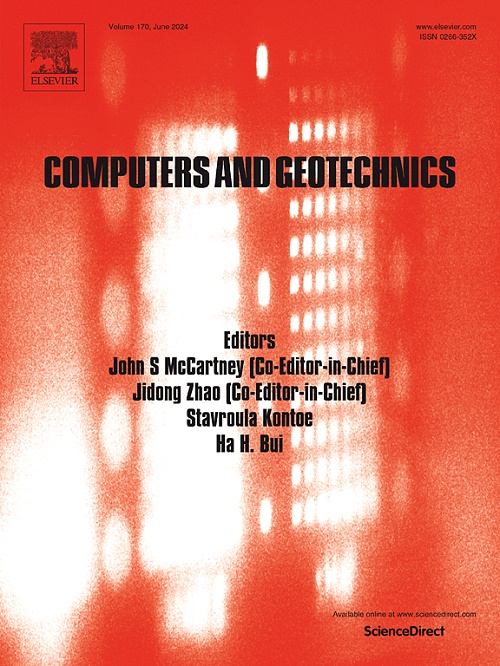Dissipative effects of baffles on the dynamics of debris flow and its impact on downstream structure
IF 5.3
1区 工程技术
Q1 COMPUTER SCIENCE, INTERDISCIPLINARY APPLICATIONS
引用次数: 0
Abstract
Debris flows triggered by heavy rainfall constitute a mixture of slurry and earthen aggregates. These flows travel downhill at a high speed, causing significant damage to downstream facilities. Baffles are among the common protective structures installed along debris flow paths to decelerate the flows, impeding their impact on downstream structures. Previous research mainly focused on the interactions between baffle systems and debris flows, while the flow impact responses, especially on downstream structures, were rarely examined. Based on a coupled VOF-DEM method, this study investigates the impeding effects of baffles on the dynamics of debris mixture flows and their impact on a downstream barrier. We found that baffles are more effective in decelerating the flows with low Froude numbers generally occurring on gentle slopes. However, debris flow with high Froude numbers run up and overflow through baffle arrays, reducing interactions between baffles and the flows. Increasing the number of baffle rows in a baffle system can further decelerate the flows, thereby transitioning flow run-up to stable pipe-up at the downstream barrier, reducing dynamic impact force on the barrier. Remarkably, regardless of flow inertial conditions, baffle systems with more baffle rows and shorter baffles alleviate the flow impact on the downstream barrier better than those with fewer rows and higher baffles. This finding provides a reference for baffle designers to prioritise baffle systems with more rows rather than higher baffles.
求助全文
约1分钟内获得全文
求助全文
来源期刊

Computers and Geotechnics
地学-地球科学综合
CiteScore
9.10
自引率
15.10%
发文量
438
审稿时长
45 days
期刊介绍:
The use of computers is firmly established in geotechnical engineering and continues to grow rapidly in both engineering practice and academe. The development of advanced numerical techniques and constitutive modeling, in conjunction with rapid developments in computer hardware, enables problems to be tackled that were unthinkable even a few years ago. Computers and Geotechnics provides an up-to-date reference for engineers and researchers engaged in computer aided analysis and research in geotechnical engineering. The journal is intended for an expeditious dissemination of advanced computer applications across a broad range of geotechnical topics. Contributions on advances in numerical algorithms, computer implementation of new constitutive models and probabilistic methods are especially encouraged.
 求助内容:
求助内容: 应助结果提醒方式:
应助结果提醒方式:


